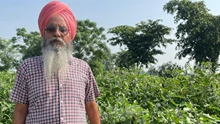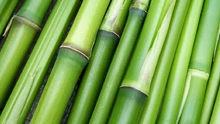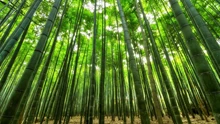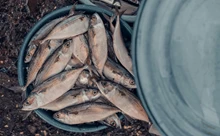
Dasheri mangoes are small to medium-sized fruits with an elongated, straight oval form and blunt, curving ends, measuring 9 to 15 centimetres in length on average. When ripe, the semi-thick, smooth, leathery, and faintly waxy skin, which is initially light green to yellow-green in colour turns golden yellow.
The medium-large stone is enclosed within the orange flesh, which is soft, juicy, and nearly fibreless under the surface.
Geography/History of Dasheri Mango
Dasheri mangoes are indigenous to a village close to Malihabad in the Lucknow district, which is located south of the Nepali border in the northern Indian state of Uttar Pradesh. The mangoes were preserved and guarded as a rare variety when they were accidentally discovered growing as a seedling somewhere in the 18th century. Eventually, dasheri mango farming extended throughout Northern India and Southern India in the state of Andhra Pradesh. Mangoes are grown in Pakistan and Nepal as well, and they are shipped to countries in Southeast Asia including Singapore, Malaysia, the Philippines, and Hong Kong.
Facts and Nutritional Value of Dasheri Mango
Mangifera indica, the scientific name for dasheri mangoes, is an Indian variety that is a member of the Anacardiaceae family. One of the oldest and most revered types in Northern India, the delicious fruits were found in the 18th century. Dasheri mangos are a popular seasonal summer fruit used in both raw and prepared recipes.
They are known for their sweet flavour and juicy, smooth flesh. The Dasheri mango is also known by the regional names Dusari, Dashehari, Dusehri, and Dussehri. In India, Dasheri mangoes are renowned for helping to create new mango varietals. Due to its superior growth traits, the fragrant cultivar was chosen as the parent fruit of several mango varieties in Northern India, including mallika and amrapali.
Dasheri mangoes are great source of fibre to help with digestion and vitamin C to boost the immune system. The fruits are an excellent source of zinc, vitamin E, iron, calcium, and other quantities of zinc, vitamin A, folate, and other minerals that support proper organ function. Dasheri mangoes include phytochemicals in the skin that may have antioxidant-like qualities to alleviate inflammation in addition to vitamins and minerals.
Ethnic/Cultural Details
The Indian government granted the town Geographical Indications (GI) designation, designating Malihabad as the birthplace of the Dasheri mango. The mother Dasheri tree, which is around 200 to 300 years old, is located close to the Dasheri Village in a grove. According to legend, there was a pile of abandoned mangoes in the village as a result of a tax disagreement between mango producers.
The mother Dasheri mango tree ultimately sprouted from the fruits that had been let to die and degrade. The Nawab of Lucknow finally acquired the mother tree for personal use and was renowned for its superb flavour and texture. The mangoes were so beloved by the Nawab that he employed soldiers to watch over the tree day and night.
Additionally, he had holes punched into the seeds to prevent replanting and covered the mango fruit with netting on the trees to keep birds away from eating it.
The variety's escape from this protection and subsequent proliferation in cultivation across the area are unclear, although locals of Malihabad have numerous fantastical tales and speculations that they are happy to exchange. The mother Dasheri mango tree is still well guarded in present times, and the live descendants of the Nawab get the mangoes each season.










